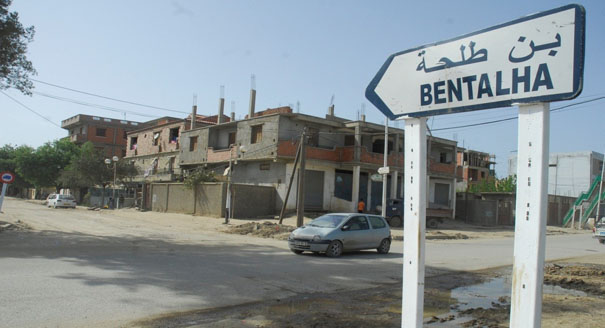On the night of September 22–23, 1997, six years into the Algerian civil war, the Armed Islamic Group, or GIA, attacked the hamlet of Bentalha, situated approximately 20 kilometers from Algiers.
At 11:30 pm, nearly 150 armed men under the orders of the GIA emir of the region, Salim Mohammed, known as Lazraoui, stormed into the village. Over the course of six hours, the GIA engaged in a terrible slaughter. Several men were killed and then castrated. Women were raped in front of their husbands, sons, or siblings, then put to death and beheaded. Some of the more beautiful ones were abducted, their bodies found several days later in a well near Bentalha.
Officials declared that 89 people had been killed, while hospital sources and survivors spoke of 417 victims and a few hundred injured. The aim of the GIA was to make a religious, political, and identity statement through annihilation. As we near the 20th anniversary of the event, it still remains profoundly engrained in the collective memory of Algerians.
At the time, Bentalha belonged to Zone 7 (Algiers) of the GIA, under the control of its Katibet al-Sabiqoun, or the Brigade of Precursors. Located in the Mitidja plain, Bentalha had strategic importance for the GIA. Situated between the coast and the mountains of the Tellian Atlas, Bentalha and its surroundings were a crucial corridor linking Algiers to Chréa, where the GIA’s headquarters was situated.
Bentalha, which had supported the Islamic Salvation Front, or FIS, in local and parliamentary elections in 1990 and 1991, effectively fell under the control of the GIA in 1994–1995. At the time, the Algerian regime was following the so-called “strategy of decay.” It intentionally left entire regions and towns, including Bentalha, in the hands of the GIA in order to create a burden for the group, facilitating the emergence of adverse conditions that could turn the population against the GIA. This appeared to work in Bentalha. The village became a support base for the GIA, which dispensed justice, administered village affairs, and organized social assistance, tax collection, and so on. However, three years into GIA rule, the population grew tired of the strict implementation of Islamic law and the GIA’s violent behavior, and it decided to cease helping the group. Instead, villagers formed a civilian militia to protect Bentalha.
It is at that point that relations between the GIA and the villagers changed. By then the security forces were increasingly present in Bentalha, yet they were unable to fully eliminate the armed groups active in the area, heightening the ambient violence. This influenced the GIA’s decision to adopt extreme measures to take back the village and its surroundings. The group also sought to punish villagers for having defected to the government’s side and began planning the massacre.
The GIA was then under the rule of Antar Zouabri, who had “excommunicated” Algerian society for failing to heed his threat not to vote in the presidential election of 1995. As a result, the recalcitrant population was to be punished for having “abandoned [Islam] and having been discouraged from fighting against its enemies.” As the GIA became increasingly isolated because of its uncompromising position, it found itself logistically asphyxiated. It’s in this context that collective killing became a means of imposing obedience in a strategic and highly competitive environment. The Bentalha massacre was a consequence.
Yet the massacre was also part of a particularly tragic sequence of similar atrocities elsewhere. Some weeks earlier, on the night of August 28, Raïs, a village situated 20 kilometers from Algiers, experienced a terrible attack in which around 300 people were killed. Similarly, on September 7–8, in Sidi-Youcef, a district on the outskirts of the capital, some 90 people were massacred. The GIA’s aim was to move its operations closer to Algiers, at a time when the group had been weakened both by the security forces and internal purges, while also guaranteeing access to the hinterland where its bases were located.
The Bentalha massacre was well-organized and coordinated. One group of attackers advanced to plant bombs at the doors of homes to ensure the population would not be able to fire at a second group of militants entering the village. The attackers were accompanied by two women from the village, referred to by villagers as the “women of Djeha,” who sought to avenge the killing of their son and brother, a GIA combatant. They held lists of names and addresses of the families to be exterminated. A third group, known as the debbahines, or cutthroats, followed, their role being to slaughter the inhabitants with knives. This group was itself divided into two: those entering homes and killing the inhabitants; and those who remained outside, preventing the victims from escaping and finishing off those who had been defenestrated but had not died.
The cruelty of the Bentalha, Raïs, and Sidi-Youcef massacres, the number of victims in each location, the non-intervention of the security forces, and the attempt by officials to minimize the numbers of victims, led many people to interpret this as a deliberate attempt by the authorities to hide their involvement in what happened. The murkiness of the situation contributed greatly to the spread of such a belief. While it is true that the security forces often used indiscriminate violence against the population, which contributed greatly to the radicalization of the youth, there is no proof whatsoever of their implication in these massacres. I was able to confirm this after almost two years of conducting fieldwork in Bentalha.
Two decades later, the Bentalha massacre remains an open wound for the survivors. One of them was Nabil, who lost his mother, sisters, and cousins. As he later told me, “The terrorists succeeded that night. They killed us all, even the survivors.”






